Best Time For Visiting Valley of Flowers National ParkPictures and description of valley of flowers in different seasons. |
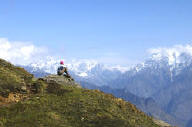 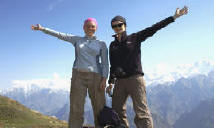 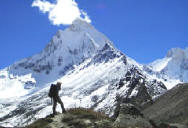 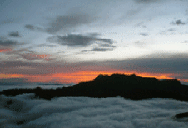 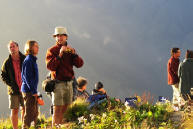
|
|
How to reach |
Place to Stay |
Trekking routes | |
|
Place to eat |
Information about Valley of Flowers |
Fair & Festival |
Best Time To Visit |
Best Time For Visiting Valley of Flowers National ParkPictures and description of valley of flowers in different seasons. |
    
|
|
| Best Time to Visit Valley of Flowers National Park |
July Mid to End of August |
Monsoon Period |
Duration:
06 Days
Max
Altitude:
4400 Tipla Kharak
Best Time:
July, August & September
Difficulty:
Moderate Trek
Fix Departure Trips : July - August & September log on : email us : nandadevitrekking@gmail.com
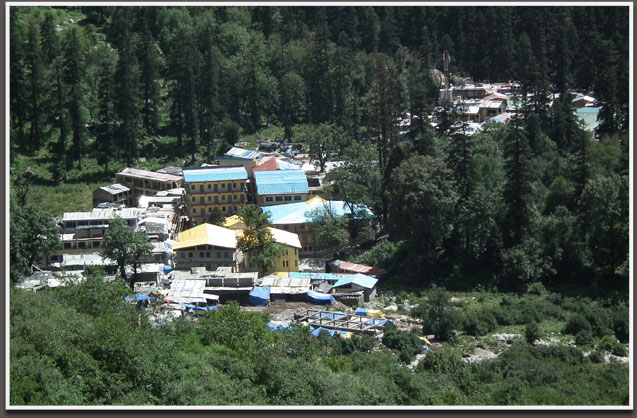
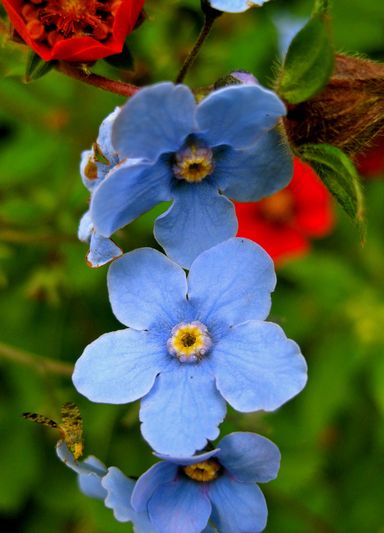
Find below the details with month wise ;
In June and July These month’s one can enjoy watching waterfalls and beautiful glaciers in the valley of flowers. The big benefit of visiting in this month is that there will be very less to no rain and flowers almost sart blooming.
In August and September As snow starts melting in May and new plants starts germinating and grow up till August. One can see a lot of flowers blooming till mid August. The Best time to see maximum number of flowers is August and September one can say this is the last month for visiting valley of flower. The plants and flowers are starts drying up and put their seeds on the earth for the next season.
Note Tourists has no authority to stay in valley of flowers. There is no ACCOMMODATION IN the park. If you want travel this amazing valley you have to stay private at lodge and hotels.
A UNESCO World Heritage site, the Valley of Flowers is renowned for its
meadows of endemic alpine flowers and outstanding natural beauty.
The Valley is a riot of natural color and splendour in summer time. Well
over a thousand varieties of flowers, shrubs, orchids and plants in myriad
hues, differing textures and colors paint the valley in a gorgeous
display. This natural plantation surrounded by dazzling snow capped
Himalayan peaks provide a spectacular panorama. Besides the valley of
flowrs, the trek passes through the spiritual heart-land, along the
ancient pilgrim routes, visiting famous temple towns of Rishikesh,
Haridwar, Badrinath etc. the tour indeed offers a unique glimpse of
centuries old history, culture and traditions right in the backdrop of
breathtaking Himalayan scenery.
The beautiful valley situated at an altitude of 3300 to 3650 mts is the
‘paradise’ of nature lovers. Starting from about 6 kms from Bhinduar
village it covers an area of about 87 square kms.The valley is
exceptionally rich of the flowers wealth and has the largest collection of
wild flowers species. The river Pushwati flows through the verdant valley.
The valley blooms with exotic. Flower from June, July till September.
There are about 520 species of flowering plants and the area was declared
as a National Park in 1982. The animal like Himalayan black beers, musk
deers, brown beers, Bharal and rich variety of birds and butter flies are
found in this national Park.
The high altitude Lokpal lake, known as Hemkund ( 4329 mts.) lies in
heavenly environs. A steep trek from Ghangharia leads one to this spot in
about four to six hours. It is an important pilgrimage for both Hindus and
Sikhs, as well as for people from other faiths. There is a Sikh Gurudwara
and a Lakshman temple built on the bank of the lake. Encircled by seven
snow clad peaks and their associated glaciers, it reflects its
surroundings enchantingly on its crystal clear serene waters. The glaciers
from Hathi Parvat and Saptrishi peaks feed the lake and a small stream
called Himganga flows out of this lake.
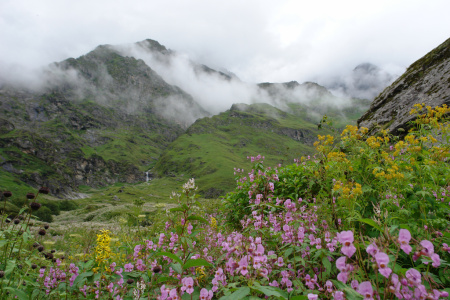
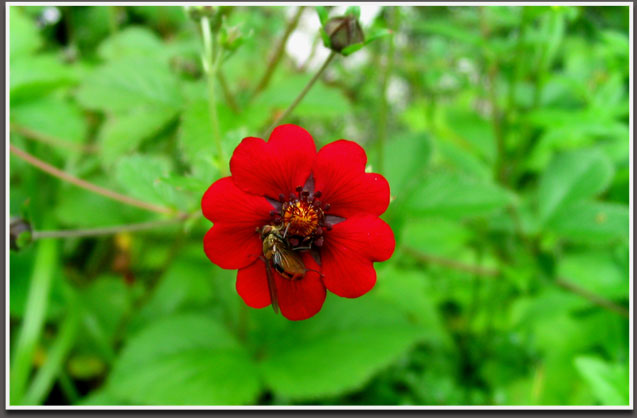
Itinerary
Day 01: Haridwar/ Rishikesh / Dehraund -
Joshimath
Morning drive to reach Joshimath (1874 mt / 253Km) which
is the winter abode of Lord Badrinath. Lunch enroute. Evening arrive at
Joshimath and check into the hotel.
Day 02:
Joshimath - GovindGhat - Ghangaria Trek
After breakfast, drive to reach Govindghat (1828 mt / 22Km). Start
trekking to reach Ghangaria(3049 mt / 14 km Trek) with packed lunch.
Ghangaria is also known as GOVIND DHAM, It is the base camp for visiting
Hemkund Sahib and Valley of Flowers
Overnight: Tent / Hotel
Day 03:
Ghangaria - Valley of Flower - Ghangaria
Trek to the Valley of Flowers. The whole valley is dotted with varieties
of exotic flowers and other flora. Return to Ghangria for overnight stay.
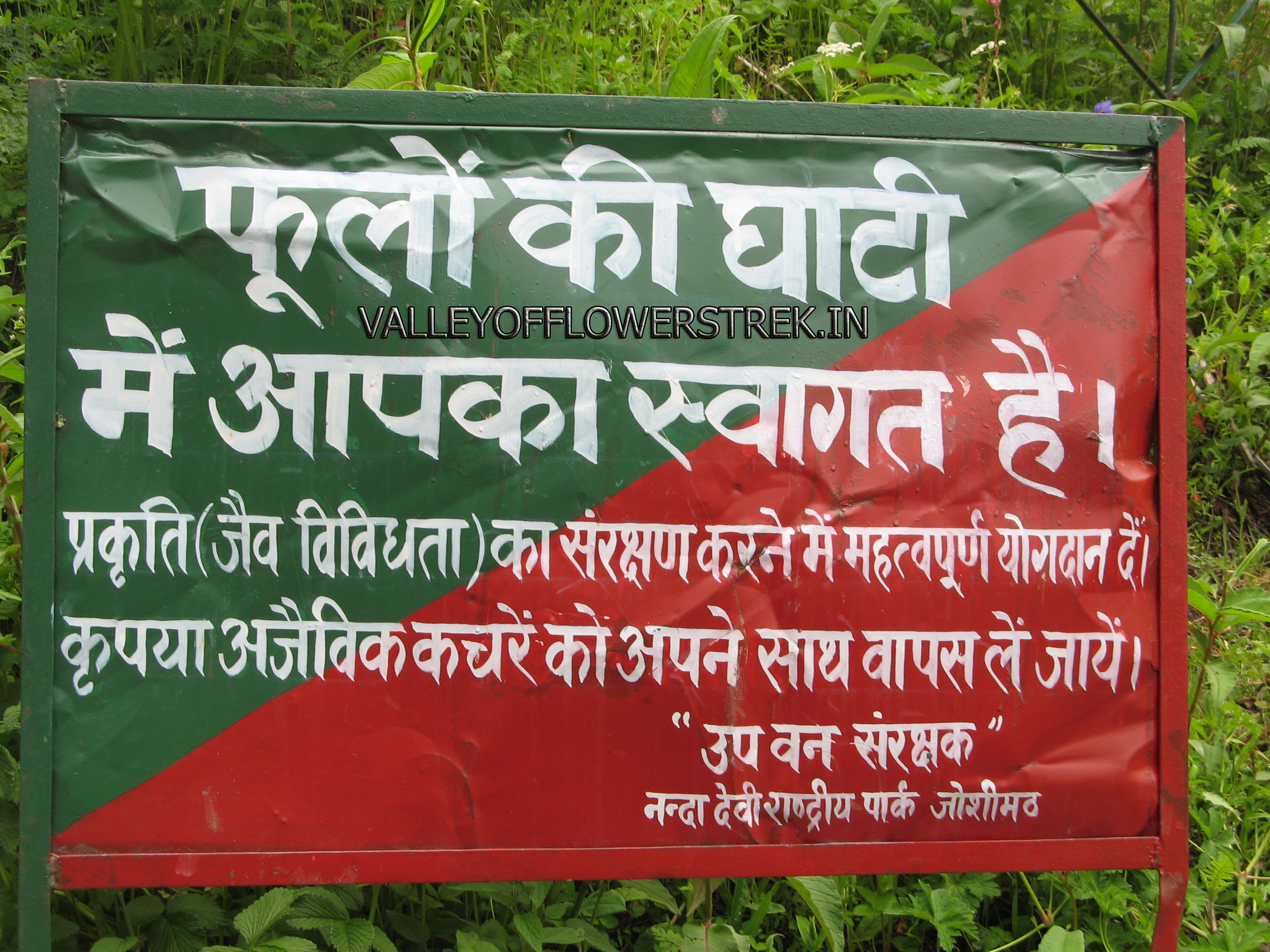
one Can visit again to Valley of Flowers to search of Flowers and Fauna. or can visit to Hemkund Sahib Lake
Day 04: Ghangaria -
Hemkund - Ghangaria
Early in the morning start trekking (7 Km) to reach "HEMKUND SAHIB". One
of the most revered of all Sikh Shrines, The Hemkund Sahib, the Worlds
Highest Gurudwara, is situated at an altitude of 4,329 mts. In the
afternoon trek down to reach Ghangariya for overnight stay. Evening is
free for rest & relaxation.
Overnight: Tent / Hotel
Day 05:
Ghangaia - GovindGhat -
Joshimath.
Overnight: Hotel
Day 06: Drive to Rishikesh./Haridwar/Dehradun. Trip end up here.
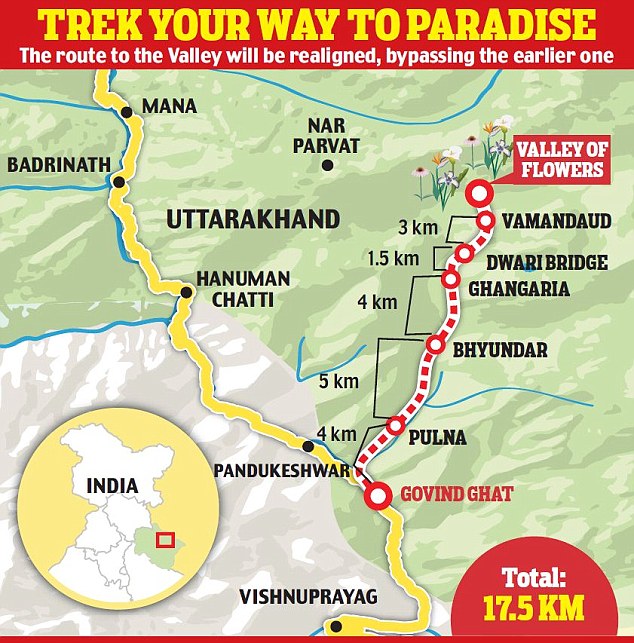
Name of the Trip : "Valley of Flowers Hemkund Trek with visit to Badrinath & Auli " |
||
Grade: Easy to easy to Moderate |
Number of Days: 06 |
Number of Nights : 05 |
Fixed Departures |
|||||
January |
XXX |
February |
XXX |
March |
XXX |
April |
XXX |
May |
20, 25 , 30 |
June |
8th, 15th, 22, 29th |
July |
Every Saturday & Sunday |
August |
Saturday & Sunday |
September |
7th, 14th, 21st,28t |
October |
2 |
November |
xx |
December |
XXX |
Of all the Himalayan meadows and flower valleys, nothing compares to Garhwal's unique rock garden, the Valley of Flowers, full of the most fascinating, fabulous, and rich variety of flowering herbs. According to the legends, the Valley of Flowers has been associated spiritually with the name of 'Hanuman', the legendary hero of Ramayana, the great Indian epic.
First bought to limelight in 1931 when Frank Smythe, a British naturalist and mountaineer, who after scaling Kamet peak, stumbled upon it by chance. Later on, Smythe , assisted by England’s eminent botanist R.L.Holdsworth, explored the valley extensively. Now, to restore the natural balance and conserve this natural heritage, the Valley of Flowers and its environs are declared as Pushpavati National Park.
Enjoy 5 nights trip exploring the famous Valley of Flowers and Hemkund, one of the finest high altitude Himalayan lakes in the regio
ALTITUDE: JOSHIMATH: , GOVINDGHAT:1828 MTS.,GHANGARIA:3200 MTS., VALLEY OF FLOWERS:3650 MTS.Hemkund 4320 mts.
BEST TIME: 25thJune to 15th September Trip cost :: 11,989 Per Head / 14,989 / 19989 / 24989 PP Grade: Easy to Moderate

| By Flight | |
Jolly Grant Airport is the nearest Airport to Valley of Flowers but the roads are only connected upto Govind Ghat from where you have to commence trek of 16kms to reach Valley of Flowers. Govindghat is situated at a distance of 292kms from Jolly Grant Airport. Jolly Grant Airport is well connected to Delhi with daily flights. Govindghat is well connected by motorable roads with Jolly Grant Airport. Taxis are available from Jolly Grant Airport to Govindghat. |
|
|
By Train |
The nearest railway station to Valley of flowers is Rishikesh but the roads are only connected upto Govind Ghat from where you have to commence trek of 16 kms to reach Valley of Flowers. Rishikesh railway station is situated 273 kms before Govindghat on NH58. Rishikesh is well connected by railway networks with major destinations of India. Trains to Rishikesh are frequent. Govindghat is well connected by motorable roads with Rishikesh. Taxis and buses are available from Rishikesh, Srinagar, Rudraprayag, Chamoli, Joshimath and many other destinations to Govindghat. |
|
|
By Road |
Valley of Flowers is connected upto Govind Ghat with motoralble roads and from here you have to commence trek of 16kms to reach Valley of Flowers. Govindghat is well connected by motorable roads with major destinations of Uttarakhand state. Buses to Haridwar, Rishikesh and Srinagar are available from ISBT Kashmiri Gate. Buses and Taxis to Govindghat are easily available from major destinations of Uttarakhand state like Rishikesh, Pauri, Rudraprayag, Karnaprayag, Ukhimath, Srinagar, Chamoli etc. Govindghat is situated on National Highway 58 making it easy to reach. |
|
Flowers in the month of July & August
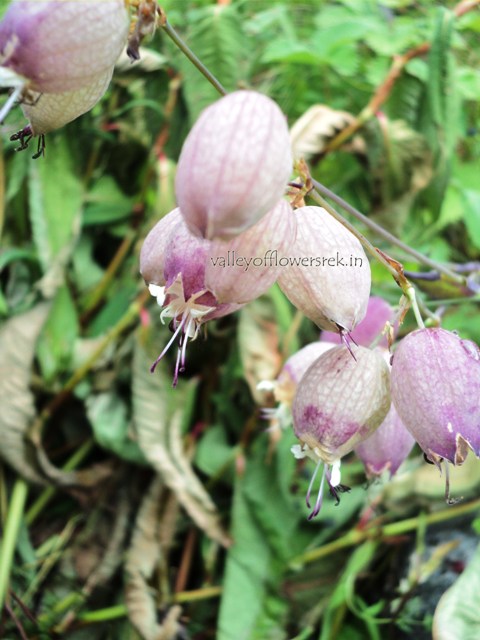
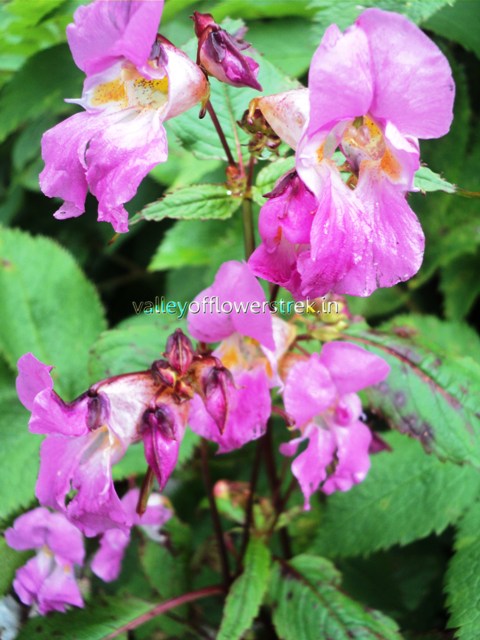
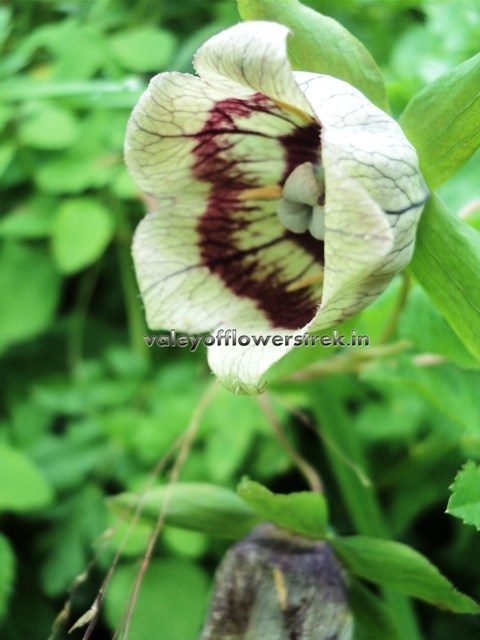
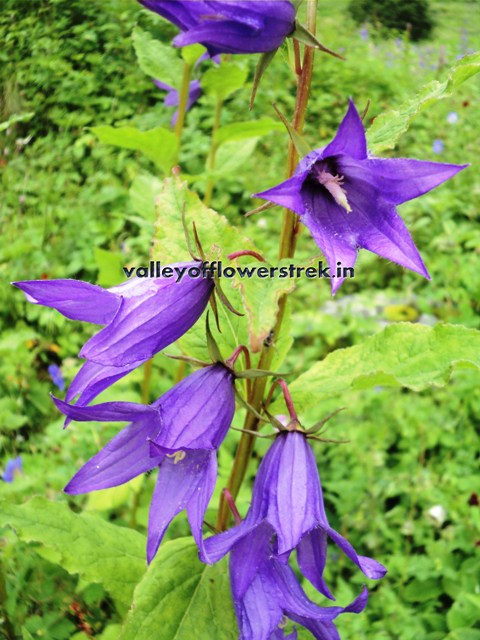
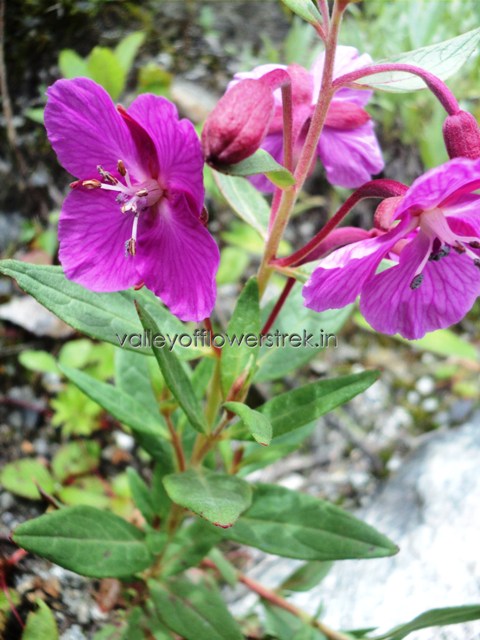
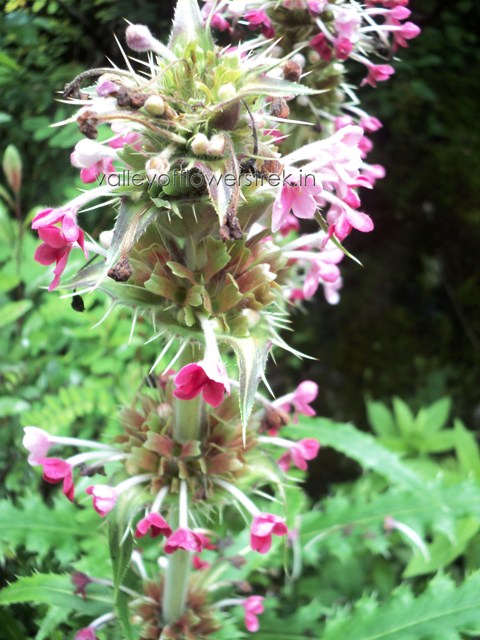
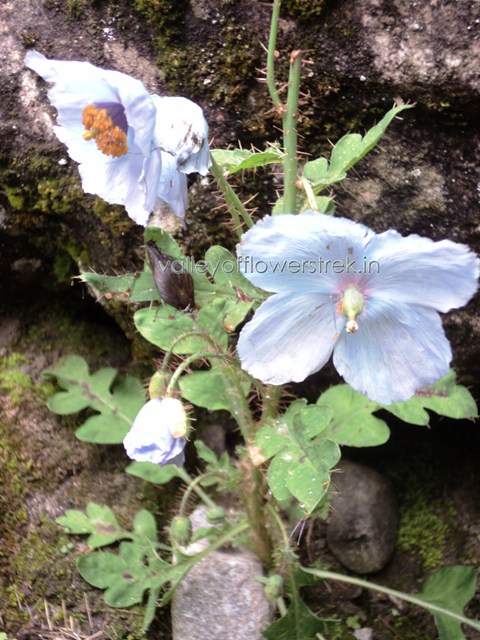

No. |
Name of Flowers |
Time of flowering |
1. |
Rhododendron arboreum |
February–June |
2. |
Primula denticuleta |
April–July |
3. |
Iris kemaonensis |
June–July |
4. |
Fritillaria roylei |
June–July |
5. |
Lilium oxypetalum |
June–July |
6. |
Arisaema costautum |
June–July |
7. |
Thermopsisa barbata |
June–July |
8. |
Rosa macrophylla |
June–July |
9. |
Caltha palustris |
June–July |
10. |
Fragaria nubicola |
May–July |
11. |
Saxifraga roylei |
July–August |
12. |
Anemone obtusiloba |
June–August |
13. |
Cypripedium himalaicum |
June–August |
14. |
Rheum australe |
July–August |
15. |
Phlomis oracteosa |
June–August |
16. |
Hackelia uncinata |
June–August |
17. |
Senecio jacquemotiamus |
August–September |
18. |
Ligularia amplexicaulis |
July–August |
19. |
Morina longifolia |
July–September |
20. |
Geum elatum |
July–August |
21. |
Geranium wallichianum |
July–August |
22. |
Impatiense sulcata |
July–August |
23. |
Meconopsis aculeata |
July–August |
24. |
Delphenium roylei |
July–August |
25. |
Aconitum hookeri |
August–September |
26. |
Thalictrum reniforme |
July–September |
27. |
Potentilla atrosanguinea |
July–September |
28. |
Sedum ewersii |
August–September |
29. |
Dactylorhiza hatagirea |
June–July |
30. |
Bistorta affinis |
August–September |
31. |
Stachys sericee |
August–September |
32. |
Nepeta connata |
August–September |
33. |
Pedicularis hoffmeistri |
July–August |
34. |
Swertia hookeri |
August–September |
35. |
Gentiana ornata |
August–September |
36. |
Gaultheria erichophy |
August–September |
37. |
Codonopsis affinis |
August–September |
38. |
Angelica cyelocarpa |
July–September |
39. |
Leontopodium jacotianum |
July–September |
40. |
Saussurea fastuosa |
July–September |
41. |
Campanula latitotia |
August–September |
42. |
Cyananthus lobotus |
August–September |
43. |
Sassurea obvallata |
August–September |
44. |
Cremanthodium ellisii |
July–September |
45. |
Anaphalis triplineruts |
July–September |
46. |
Inula grandiflora |
August–September |
47. |
Aster albescens |
July–September |
48. |
Selinium tenuifolium |
August–September |
49. |
Heracleum pinnatum |
August–September |
50. |
Epilobium latisperma |
August–September |
51. |
Silene setisperma |
August–September |
52. |
Arenaria griffithii |
August–September |
53. |
Corydalis junecea |
August–September |
54. |
Erigerono multiradiatus |
August–September |
55. |
Polygonum molle |
August–September |
56. |
Himalayan Blue Poppy |
July–September |
57. |
Codonopsis viridis |
July–August |
58. |
Origanus vulgare |
July–August |
59. |
Hackelia uncinata |
July–August |
60. |
Salvia hins/lanata |
July–August |
61. |
Smilacina purpurea/oleracea |
June–July |
62. |
Viola biflora |
June–August |
63. |
Rhodiola heterodonta |
July–August |
64. |
Epilohium latifolium |
July–August |
65. |
Cotoneaster integrifolius |
July–August |
66. |
Dubyaea hispida |
August–September |
67. |
Saussurea costus |
July–August |
68. |
Ligularia fiseheri |
July–August |
69. |
Androsace museoidea |
July–August |
70. |
Eritrichium conum |
July–August |
71. |
Lindelofi anchusoides |
July–August |
72. |
Thymus linearis |
June–August |
73. |
Rheum webbianum |
June–August |
74. |
Megacorpaea polyandra |
June–August |
75. |
Trillidium govanianum |
June–August |
76. |
Satyrium nepoleanse |
June–August |
77. |
Podophyllum hexaneum |
June–August |
78. |
Picrorhiza kurrooa |
June–August |
79. |
Polygonatum multiflorum |
June–August |
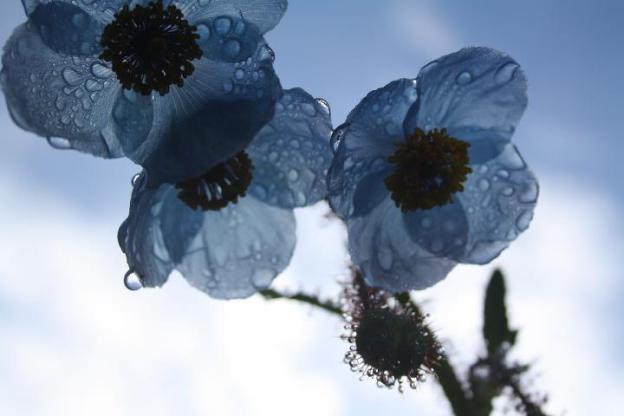
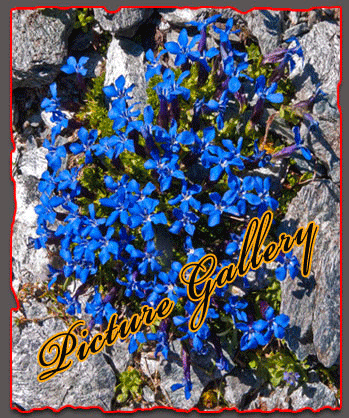
FAQs --->
For Further Details and Booking write down us or call us :
Corporate Office
24 HRS contact number : + 91-
09837937948 / 09759675791
/ 09412439693
Email:
nandadevitrekking@gmail.com
CHAT RD : MSN : YAHOO : SKYPE : garhwalhimalaya
Visit us: www.valleyofflowerstrek.in
![]()
![]()
![]()
![]()